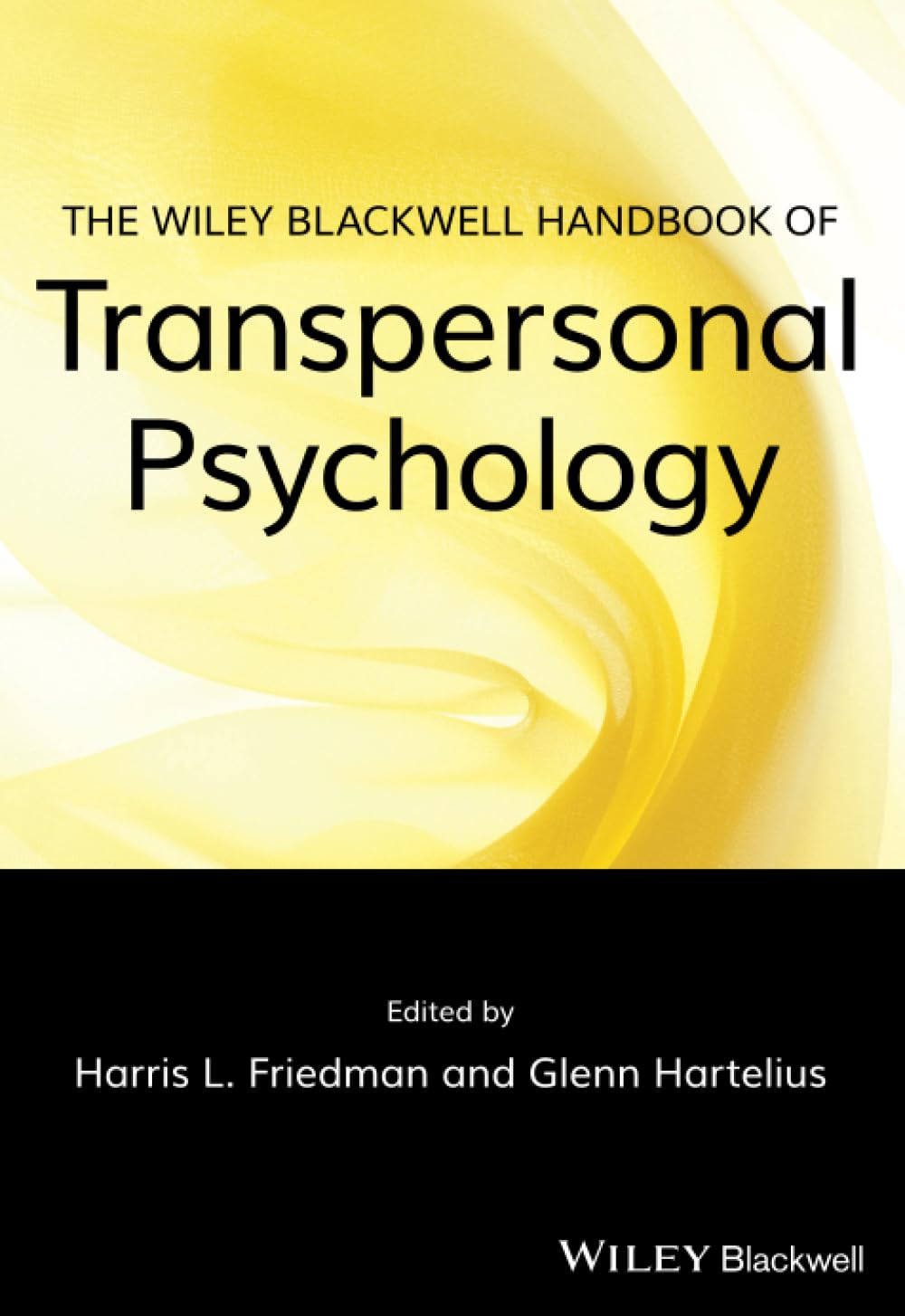Customer Services




Full description not available
J**N
This is the real deal!
This is a remarkable venture, and I wish it every success. It is quite enormous, and very expensive, but of course that is what libraries are for.The first chapter is entitled “A Brand from the Burning: Defining Transpersonal Psychology”, and is by Glenn Hartelius, Geffen Rothe and Paul Roy. It contains a very thorough academic discussion of the word ‘transpersonal’, which will I think have now to be the locus classicus for any serious consideration of the issue of how to name the serious question of whether to drop this word, and use some other word, such as ‘spirituality’ for the realm under consideration. It is well known that the American Psychological Association had serious reservations about opening a Division of Humanistic Psychology, but eventually did so; it had even more serious reservations about starting a Division of Transpersonal Psychology, and still has not. Anyone interested in such issues had better read this chapter.“Transpersonal psychology, along with humanistic psychology, arose in response to psychologies that reduced the person to their simplest actions, their basest motivations, and their most material structures: bio-machines in a purposeless physical wasteland. In contrast, a transpersonal approach sees certain non-ordinary states as evidence that humans participate in an interconnected whole, evolving purposefully toward unseen but sometimes deeply felt ultimates. It is the sensed presence of this process, whether expressed in the language of science or spirituality, which infuses life with felt meaning. Healing interventions such as psychotherapy then become focused on aligning the personal desire for wholeness with this larger evolutionary current.” (p.13)Chapter 2 is by our very own Michael Daniels, and is entitled “Traditional Roots, History, and Evolution of the Transpersonal Perspective”. It is a serious and I think quite brilliant survey of this field, and again deserves to be given the status of a pioneering and rather complete rundown on the scope and limits of the whole field. The first four chapters constitute a rather thrilling introduction to the whole field of transpersonal psychology.One of the most exciting chapters is by Stanislav Grof, entitled “Revision and Re-Enchantment of Psychology: Legacy from Half a Century of Consciousness Research”. This is very serious, and quite brilliant. We continually have to say that humanistic psychology is not just Maslow and Rogers, and in perhaps in days to come we shall have to say that transpersonal psychology is not just Jung and Grof.The chapter on altered states of consciousness is by Albert P. Garcia-Romeu and Charles Tart, and makes a good introduction to a very tricky area. We get Alan Vaughan on Jung, Brant Cortright on the Subtle, Alan Combs on Ken Wilber, Hartelius and Ferrer on the participatory turn, Harris Friedman on self-expansiveness and our own Les Lancaster on neuroscience.Which brings us on to the third part, entitled ‘Transpersonal Methodologies’, which includes transpersonal research (Braud and Anderson), neurophenomenology (Laughlin and Rock), quantitative assessment (MacDonald and Friedman), middle-range theory (Friedman) and ‘Philosophical underpinnings of transpersonal psychology as a science’ (MacDonald again). All quite technical, but well written and approachable.The fourth part is entitled ‘Transpersonal Experiences’, and is quite fascinating. It starts off with the work of Rhea White and others on EHEs, which I came across some years ago and actually contributed to. EHEs are Exceptional Human Experiences, and Rhea White has a large website devoted to this exciting area of work. It would be great reading for anyone interested in sorting out their own weird experiences. The next chapter is about psychedelic-induced experiences (Fadiman & Kornfield) and brings us up to date with the latest research, since research began again after 2006. We then go on to NDEs, and how to handle these Near-Death Experiences (Fracasso, Greyson and Friedman again), which are so challenging to orthodox psychology. Jenny Wade tells us about transpersonal sexual experiences, and then we get a good chapter on parapsychology.Part Five is headed ‘Transpersonal Approaches to Transformation, Healing and Wellness’ and gives us ten chapters by people like David Lukoff, Roger Walsh, Ilene Serlin and Vitor Rodrigues, including the Diamond Approach of A H Almaas. Here we get excellent stuff on mental health, meditation, hypnosis, creative arts therapies and so on.The final part gives us six chapters on ‘Transpersonal Studies’, which includes ecopsychology, feminist and cultural contributions (a very powerful chapter, I thought), social engagement, transpersonal medicine, the arts and the transpersonal, and transpersonal education.This book has to be recognised, I think, as a great contribution to our understanding of the range and depth of the transpersonal approach. Of course it is very expensive, and we shall all look forward to the paperback version, which we might perhaps be able to afford, but in the meantime there is always the library. This book is a great source of up to date information, and a great contribution to our understanding of this important area of work.John Rowan 19 February, 2014
M**.
A good proportion of the volume is dedicated to definitions
A comprehensive overview of the academic discipline of Transpersonal Psychology, with contributory chapters by key authors in their respective realms of expertise. A good proportion of the volume is dedicated to definitions, dlelineating parameters of enquiry & methodological issues when considering Transpersonal subject matter from a scientific perspective. Reading the text is like flying over a vast terrain, giving a great sense of the topography, with little close up detail. This text is probably more for the academic, researcher or Transpersonal writer. I'm glad that it's on my shelf to dip into subject matter as diverse as neurophenomenology, psychedelic-induced experiences, expressive & creative art therapies & feminist & cultural contributions to Transpersonal matters. For those looking for personal inspiration & Transpersonal guidance, I would suggest looking elsewhere.Lawrence Yusupoff, Clinical Psychologist
Trustpilot
4 days ago
1 day ago